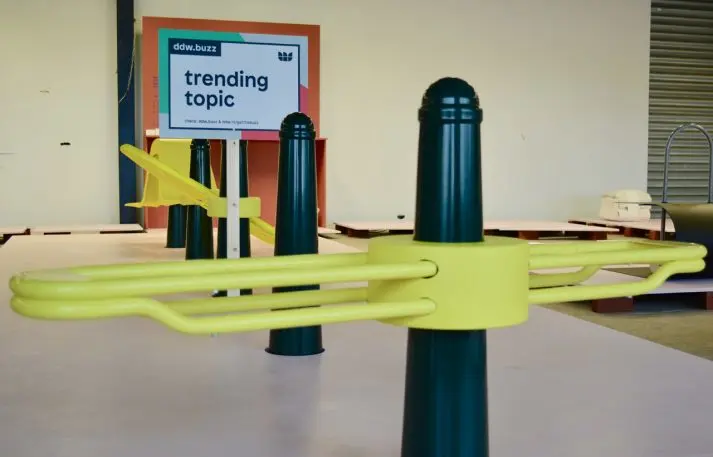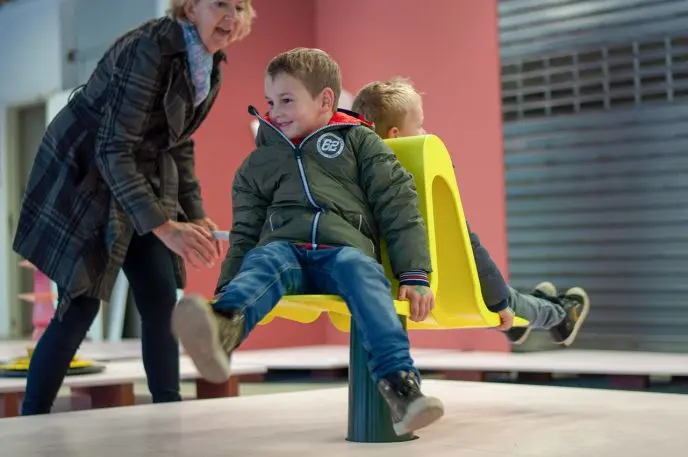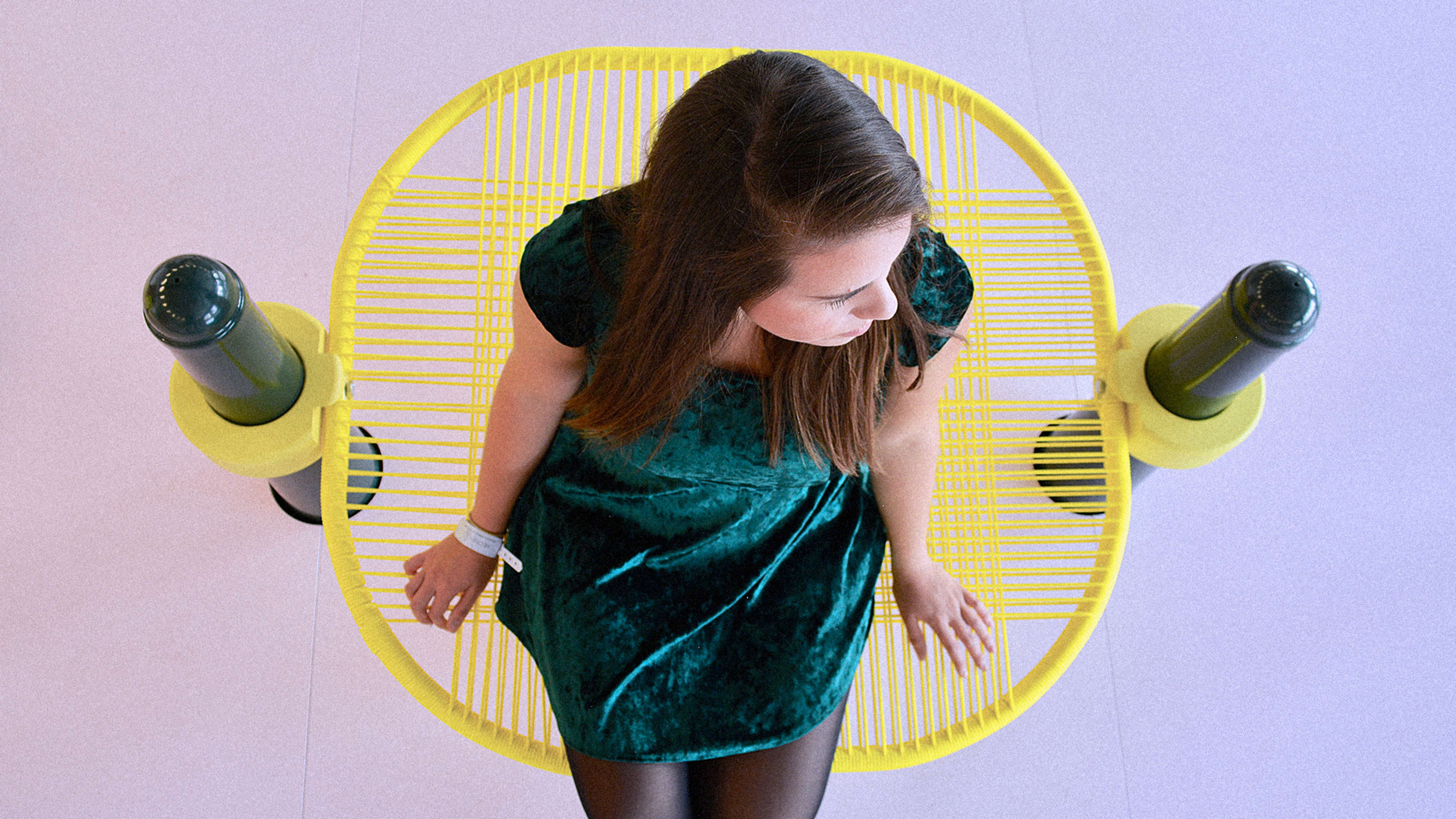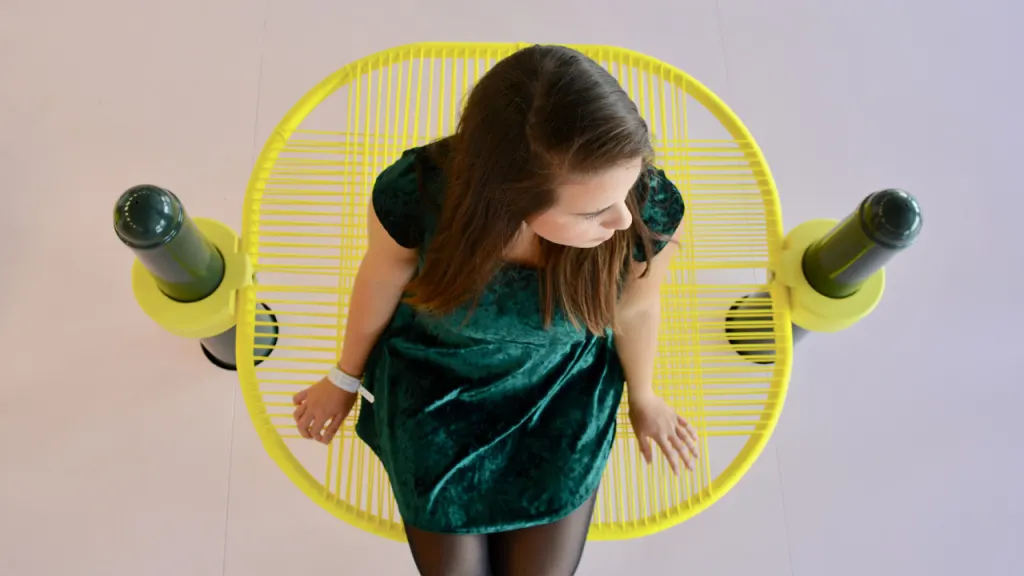In the last few years, vehicle-aided terrorism has become a horrible reality for many cities. To protect pedestrians, cities have expanded efforts to install street bollards, peppering the urban landscape with these three-foot-high metal barriers. After New York was hit by a truck-borne terrorist in 2017, the government decided to spend $50 million on bollards, dramatically increasing the footprint of this defensive architecture on the streets.
Could these increasingly common devices serve a second purpose–and bring strangers together on city streets? That’s the idea behind three prototypes by the Peruvian designer and architect Beatriz Pero Giannini. The three chairs–called the rocker, the slider, and the wobbler–sit atop bollards and function like seesaws. If one person sits down they’ll probably be uncomfortable, but if two people sit together it brings each design into balance. By encouraging people to sit down together, Giannini hopes to bolster a sense of community among strangers.

“This tension that is created by the interaction was very appealing to me: the softness of this intimate moment and interaction, with the sharpness of placing it in public,” she says.
Giannini created the three prototypes during her first year as a student at the Piet Zwart Institute in the Netherlands, and was originally inspired by the bollards that dot the landscape of Amsterdam. There are so many in the Dutch city, they even have a special name–amsterdammertjes, which date back to the 1800s–and they’re mostly used to separate the sidewalk from the street. “I wanted to take the pre-existing element (the amsterdammertjes) that’s intrinsic to the identity here and try to generate a positive encounter that would encourage a sense of community between people,” Giannini says. “I wanted to achieve that through the balance and cooperation two people need to achieve to use the design.”

The design, which Giannini created in collaboration with the street furniture company HR Groep, was on display at Dutch Design Week this fall. At the fair, she tested out her ideas with passersby–and found that they worked exactly as envisioned. Even people who were initially skeptical came away smiling. She credits the chairs’ intuitive nature: You don’t need any explanation to understand how to use them, or that it’s an experience better shared. (She’s now in talks with HR Groep to bring the designs to life in cities.)
Ultimately, the rocker, the slider, and the wobbler are about sparking small, joyful moments in a pedestrian’s day, which can help them feel more connected to the place they live–and the people who live around them. “These kind of positive interactions are essential to the fabric of what urban life is and what the essence of what living in a city means,” Giannini says.
Recognize your brand’s excellence by applying to this year’s Brands That Matter Awards before the early-rate deadline, May 3.








